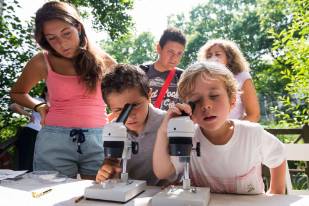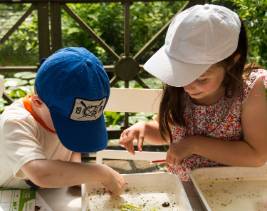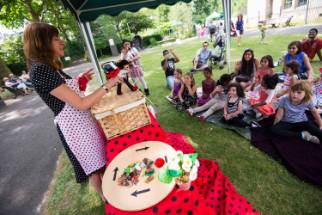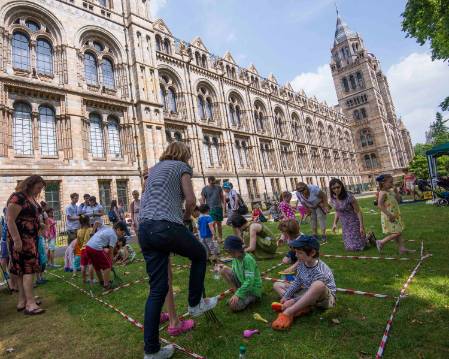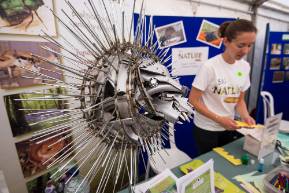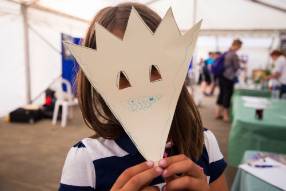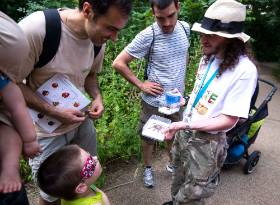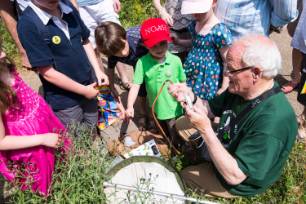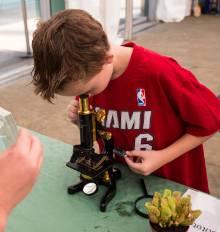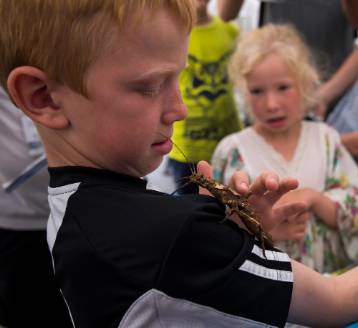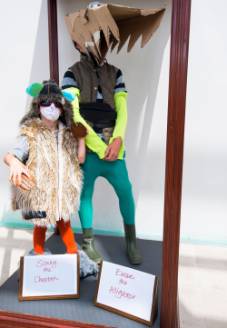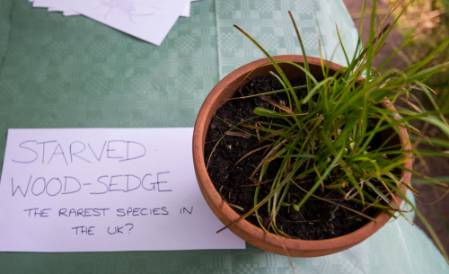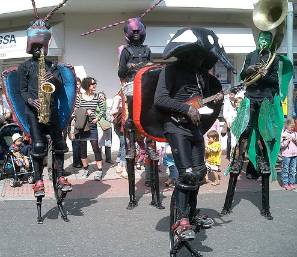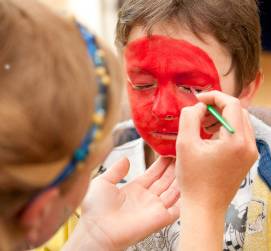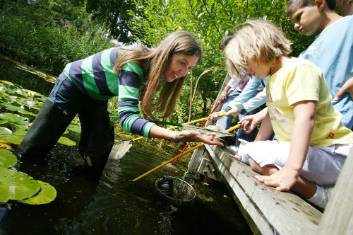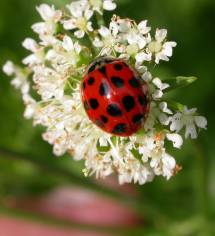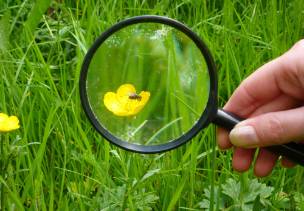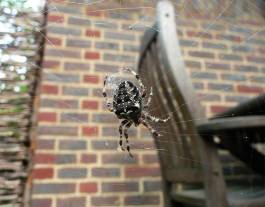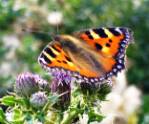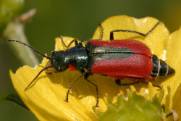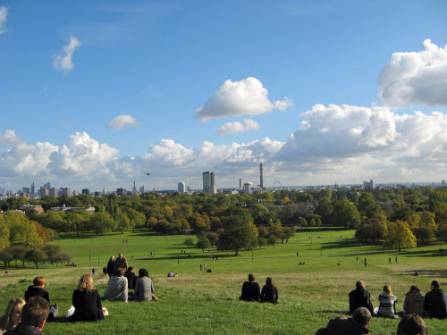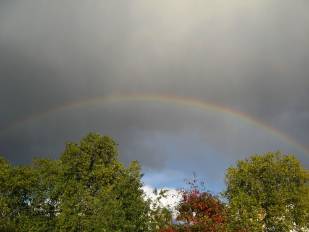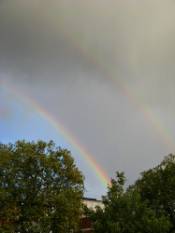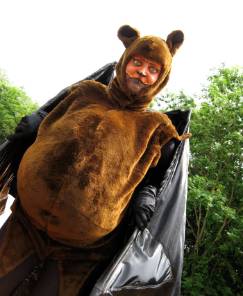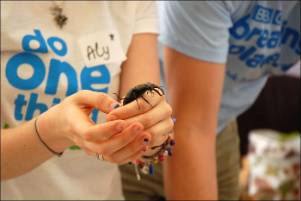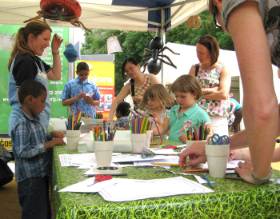The weather was glorious for our annual Big Nature Day on Saturday 13 July. Over 4,000 visitors joined us to explore the best of British wildlife in and around the Museum, and soaking up the best of the British heatwave too.
Examining insects and pond life at the outdoor displays in the sunny Wildlife Garden - among the most popular activites at this year's Big Nature Day. Select all images to enlarge them.
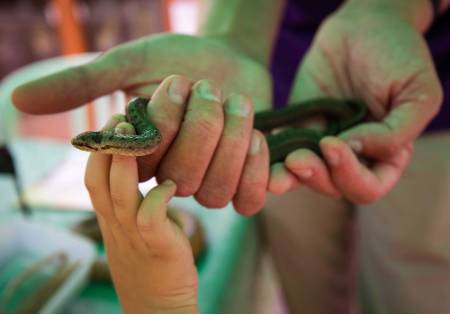 Tiny hands get a close encounter with the smooth snake which was brought along by the Amphibian and Reptile Conservation group.
Tiny hands get a close encounter with the smooth snake which was brought along by the Amphibian and Reptile Conservation group.
Lucy Robinson, the Museum's citizen science manager and worm charming aficionado, reports back with the day's highlights:
'The marquees and Wildlife Garden were packed with over 30 stands showcasing wildlife as diverse as dragonflies, ferns, snakes and insect-eating plants. The Spotty Dotty puppet show attracted lots of the younger visitors with ladybirds and insect friends.
Left: The Spotty Dotty puppet show entertained the young ones and taught them about ladybirds and more. Right: Lucy reading out the worm charming rules before the teams got stuck in.
'Our worm-charming competition on the front lawn featured some fierce rivalry, but sadly no worms (who were sheltering deep underground from this hot weather!). Neither fork-twanging, stamping or even music could bring the worms to the surface. However, people could see and hold live worms at the Earthworm Society of Britain's stand in the marquee, so they didn't go away too disappointed.
Worm charming competitions on the front lawn in full sway - participants could twang forks, stamp and make music.
'Some unusual and intriguing things the visiting nature groups brought included carnivorous plants from the South London Botanical Institute, a large metal hedgehog sculpture from the People's Trust for Endangered Species, and some live reptiles courtesy of the Amphibian and Reptile Conservation trust.
The People's Trust for Endangered Species stand showed off a fabulous hedgehog sculpture and invited hedgehog mask-making.
'One of the challenges of organising the event was how to keep the reptiles cool on such a hot day – we had to freeze lots of ice packs and wrap them in fabric in their tanks to give the reptiles a cold area where they could cool off when not entertaining our visitors.
Left: Discovering unexpected animals on the ladybird hunt. Right: Spider expert Tom Thomas from the British Naturalists Association leading the spider safari in the Wildlife Garden.
'Making pipe cleaner dragonflies with our dragonfly curator Ben was also really popular (they made over 400 dragonflies before they ran out of materials!). And the spider safari through the Wildlife Garden led by expert Tom Thomas from the British Naturalists Association, along with some fabulous face and body painting.attracted many fans.
Fantastic and original face painting was a hit with families as was zooming in on invertebrates.
'Visitors told us the best parts of the day were seeing the wildlife specimens and meeting all the different nature societies. Kids raved about being able to look through the microcopes, touch the snakes and make lots of things.'
Thanks Lucy. We were also told by our Wildlife Garden team that over 60 insect hotels were made by enthusiastic young visitors, using recycled plastic bottles which they filled with reeds from the Wildlife Garden pond.
Other kids' favourites included the Amateur Enomologists' Society's New Guinea spiny stick insect, the chance to become the Museum's latest specimens on display (right), and dissecting owl pellets (below) with the London Natural History Society.
And the Species Recovery Trust shone the spotlight on some of the UK's rarest species... starved wood sedge, pictured below.
Roll on the next Big Nature Day in 2014.
Get more involved in the UK's nature activities and local wildlife that matters to you



